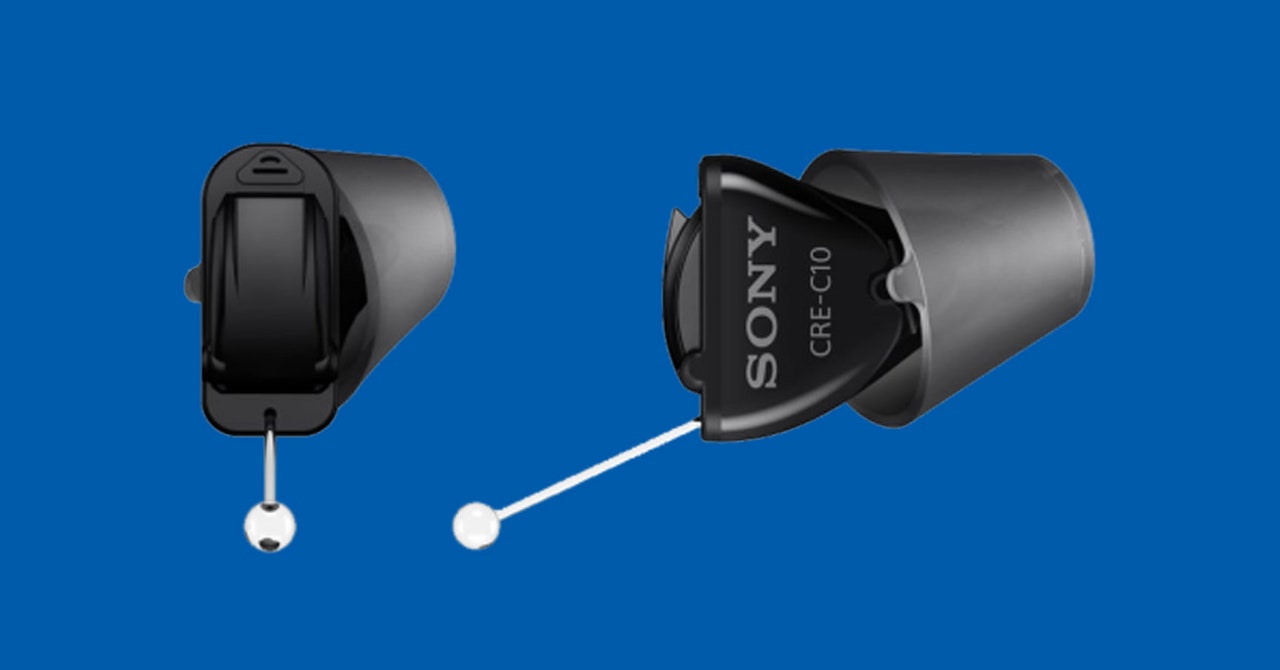If your hearing is normal, you can be forgiven for missing the massive upheaval that the hearing aid market has undergone in the past few years. What once meant spending thousands of dollars through an audiologist or custom hearing aid merchant—all for bulky, over-the-ear hardware made by one of the “big five” manufacturers that collectively have been called a cartel—has radically changed. Today’s hearing aids may look like standard audio earbuds or fit nearly entirely in the ear canal, and thanks to a long-awaited ruling from the US Food and Drug Administration, five years in the making, you can finally get them over the counter, sans prescription, and for far less money.
Startups and established consumer electronics companies have wasted no time jumping into the market, with the latest sets arriving from none other than Sony. If you needed proof that hearing aids have gone fully mainstream, well, here it is.
Sony recently debuted two models of over-the-counter hearing aids; the CRE-C10 is the entry-level set, coming in at $1,000 per pair—less than half the starting price of many popular models. A far cry from hearing aid models released even a year or two ago, the C10 slips entirely into the ear canal, with only a short removal cord (a protrusion commonly mistaken for an antenna) visible to even a careful observer. A selection of replaceable sleeves is included to perfect your fit, but mine fit just right straight out of the box.
Since there’s no audiologist involved with customizing your sound profile, it’s a (seemingly) simple matter to get started configuring and fine-tuning the aids. You’ll soon note that there’s no Bluetooth or Wi-Fi here. Like many consumer-grade hearing aids, these use an app, Sony Hearing Control, that communicates directly with the miniature speakers via high-frequency sound waves emitted from your phone instead of wireless tech.
Photograph: Sony
Pro tip: You’ll need to follow the configuration instructions exactly, and I mean to the letter. As a techie veteran, I was lax, breezing through the preface material and forgetting a key step, after which I found that the phone wouldn’t communicate with the hearing aids. Many online commenters have made such complaints as well, but the problem in part lies with Sony, which should have made this process more idiot-proof. For me, I was sure my phone was not muted, since I was talking via its speaker just minutes earlier. But it turned out that while my phone volume wasn’t muted, my media volume was, and the app was trying to obliviously send signals to the hearing aids through a silent speaker. While this was ultimately my fault for not following directions perfectly, Sony would do well to revamp its setup process to help users determine whether simple issues like this are impeding them and to avoid the onslaught of complaints.
Once I figured out the muting mistake, configuration proceeded normally, with a roughly 10-minute session asking me to listen for pings of various frequencies and volumes in either ear, using my “did you hear it?” results to set the frequency shape for the hearing aids. Once finished, these settings can’t be directly changed without running through the configuration again, but various controls can let the user change volume in each ear independently, tweak bass and treble, or use a “fine tuning” system to, well, fine tune the audio. All told, I found the default calibration to be quite effective, and I ultimately relied only on some minor volume adjustments over the course of my days of testing with the units to get clear audio out of the aids.
Performance is uniformly high. The aids do a good job of amplifying all sounds across the board, though I found lows were particularly bumped up. This can lead to a somewhat jarring echo sensation when walking or typing, so pay attention to the app’s volume adjustments to mitigate this effect. Overall, however, I found everything from conversation to media watching was improved with the hearing aids in, even before completing any fine-tuning. Hiss is minimal—the more ambient sound around you, the more noticeable it tends to get—and I never encountered any of the high-pitched whining I’ve seen in other OTC models. Best of all, the units are extremely comfortable because they’re so small; I was able to wear them for hours at a time without any discomfort. I’m sure I could have easily reached the forget-they’re-there point had I had time for long-term testing.



